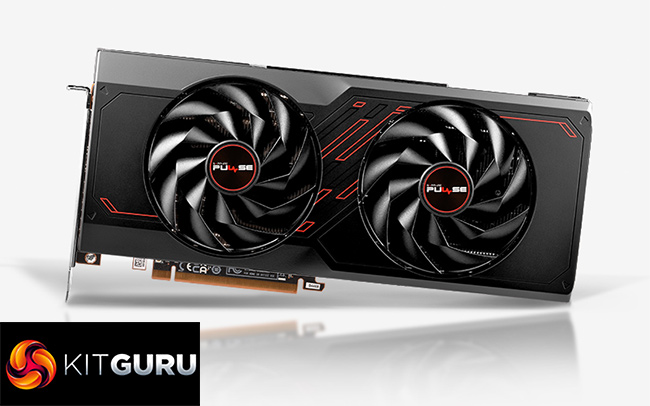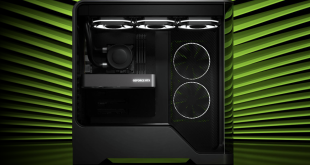Arriving at the same time as AMD's new RX 7800 XT, this review has focused on the slightly cheaper RX 7700 XT graphics card. Retailing for $449 MSRP, or £429.99 for UK buyers, it has Nvidia's RTX 4060 Ti 16GB firmly in its sights and frankly gives that GPU a bit of a pasting.
That was immediately evident when looking at our initial game benchmarks. The RX 7700 XT is first and foremost a 1440p GPU and does a very good job at that resolution. It hit at least 60FPS in every title we tested using Ultra settings, with the only exception being A Plague Tale: Requiem, a notoriously GPU-heavy game. It is significantly faster than the RTX 4060 Ti 16GB, too – by 21% on average, while six games tested showed gains of at least 25% for the Radeon GPU. It was never less than 7% faster, either.
It's been interesting to see how the 7700 XT compares against its direct predecessor, too, given both GPUs launched at effectively the same price in the UK. At 1440p, we're looking at a 23% uplift versus the RX 6700 XT, and that makes it on-par with the RZX 6800. It's not a particularly inspiring leap forward in that regard, and I can't imagine many 6700 XT would be interested in upgrading.
That said, RDNA 3 has made clear strides in ray tracing, and the RX 7700 XT scales much better than the 6700 XT here, coming in 39% faster when RT is enabled. Nvidia still has the upper hand, with the RTX 4060 Ti 16GB miles faster in Cyberpunk 2077 (using RT Overdrive) and Ratchet and Clank. The RX 7700 XT is actually faster in Control and F1 23, but overall it comes in 12% slower on average than the aforementioned Nvidia GPU. We still believe Nvidia has a clear advantage in ray traced workloads, but the RX 7700 XT is certainly a big improvement over RDNA 2.
I generally contend that Nvidia has a feature advantage over AMD which is worth discussing. We've already mentioned ray tracing, but DLSS 2 typically resolves at higher fidelity than FSR 2, while FSR 3 isn't out yet when 40-series buyers have been enjoying Frame Generation since October last year. Another significant win for Nvidia comes when looking at power draw and efficiency. The RX 7700 XT draws 225W on average at 1440p, and that's more than even the RTX 4070, despite AMD's GPU being slower by 10% or so. Nvidia therefore has a clear and fairly sizable lead in terms of efficiency, with RDNA 3 lagging behind in this regard.
That being said, as important as some of those criteria are, we can't get away from the fact that the RTX 4060 Ti 16GB is just bad value, even at the now reduced £430 price point. It is clearly and overwhelmingly beaten by the RX 7700 XT for rasterised gaming, despite both cards costing the same, and that means the AMD GPU delivers a 15% improvement to cost per frame. Even considering the Nvidia features advantage, I think the vast majority of gamers would pick the card that's 20% faster… for the same price.
The real problem for the RX 7700 XT, however, is that it fails to justify its existence when compared to its bigger brother, the RX 7800 XT. Much has already been said about the relatively small price difference between the two, but the facts are this – the RX 7800 XT is 18% faster on average at 1440p and offers an extra 4GB of VRAM, all while costing just 12% more.
This strategy does not make sense to me and I would love to know the thinking behind it. After all, Scott Herkelman went on record and said supply is ‘about equal' between the 7700 XT and 7800 XT, so the former isn't simply an upsell card. But genuinely, who wouldn't pay the extra £50 to get the exponentially faster card that also comes with more VRAM?
Ultimately, AMD's RX 7700 XT is a confusing and slightly infuriating product. On the one hand, it soundly beats its competition at the price-point, really in quite a brutal fashion. Yet it isn't much of an upgrade over its predecessor, and frankly it mainly looks good over the 4060 Ti 16GB because that is a particularly weak offering from Nvidia. The 7700 XT could still be a viable option, but it has got to be at least 15% cheaper, ideally 20% cheaper, than the RX 7800 XT for it to make any real sense.
Just a final word on the Sapphire Pulse card we have reviewed today, in lieu of any reference model. It has proved a very solid performer in my testing, offering very low noise levels while running nice and cool. Sapphire even tells us it is set to retail for £419.99, so that's £10 below MSRP, which only helps to make it look more appealing.
We don't yet have a buy link but the AMD RX 7700 XT is due on sale today, September 5th, with a UK MSRP of £429.99.
Discuss on our Facebook page HERE.
Pros
- Strong 1440p gaming performance.
- Crushes the RTX 4060 Ti in rasterisation.
- Ray tracing, although not great, is significantly improved versus RDNA 2.
- Sapphire Pulse card runs cool and quiet.
Cons
- Not a huge leap forward from the RX 6700 XT (+23%).
- Offers worse value than the RX 7800 XT, while also shipping with 4GB less VRAM.
- Nvidia has the edge for ray tracing, particularly in showcase titles like Cyberpunk 2077 with path tracing.
- Only small improvements to efficiency versus RDNA 2 and it's still well behind the 40-series.
KitGuru says: The RX 7700 XT could be a winner considering how much faster it is than the 4060 Ti 16GB for the same money. Compared to the RX 7800 XT however, it makes little sense to us.
 KitGuru KitGuru.net – Tech News | Hardware News | Hardware Reviews | IOS | Mobile | Gaming | Graphics Cards
KitGuru KitGuru.net – Tech News | Hardware News | Hardware Reviews | IOS | Mobile | Gaming | Graphics Cards




